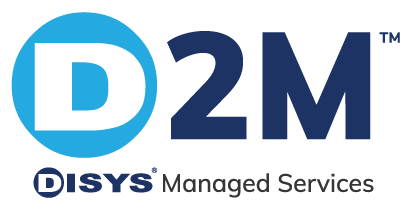Cognitive
Automation is core to what we do at D2M. We are constantly looking for ways to make our processes, and those of our clients, more efficient and productive. So, how can an organization get started?
The Cognitive Ladder
The cognitive ladder reflects a journey we have seen in many organizations. When an organization begins to focus on automation, they tend to begin with simple process automation, involving scripting and rote tasks. As automation groups mature, they proceed to use more advanced technologies to improve complex tasks.
The Cognitive Ladder involves four stages: Robotic Process Automation (RPA), Cognitive Automations, Chatbots, and finally true Artificial Intelligence (AI), involving prescriptive analytics.
Artificial Intelligence:
Data analytic, insights and decision-making.
Chatbots:
User interactions and assistant type BOTS (internal or external).
Cognitive Automations & Autonomic:
Manage unstructured data through Machine Learning & Natural Process Learning.
Robotic Process Automation (RPA):
Workflow, rule-based, repetitive and transactional high-volume business processes.

Robotic Process Automation (RPA)
At D2M, when we look at RPA, we think of the automation of rote tasks. Specifically, repeatable tasks where human judgement is not required, and all processes can be defined algorithmically. RPA can bring tremendous productivity gains in static back office processes. There are many tools that can be applied to the automation of rote tasks. At D2M, we are tool agnostic, and dedicated to recommending the best tool for the job. Whether that tool involves an advanced RPA suite or a humble script and dedicated scheduling job, D2M is solely focused on utilizing the best tools available.
Cognitive Automation
Not all tasks can be broken down into simple structured algorithms. Some involve the processing of unstructured data, such as forms and documents. The next stage in the cognitive ladder is handling this unstructured data, giving that data structure and incorporating that data into the automation.
For example, an organization may receive an email with an attached order. This order may be in a PDF, it may be a scanned document, or it may be one of a number of form types. Though cognitive automation, we can automatically take those attachments, classify the attachment type, and pull structured information from the attachment to kick off the order process. Cognitive automation dramatically increases the types of processes that can be successfully automated. D2M has extensive experience in cognitive automation and can help with your form and document processing automations.
Chatbots
We don’t tend to think about chatbots as automation, but that’s what they are. Chatbots, when well implemented, are simply an interface to take a client’s intent and begin an automated process to give the client what they want.
Prescriptive Analytics and Machine Learning
At the top of the Cognitive Ladder is true Machine Learning or using data to make prescriptive recommendations for an organization. D2M can help your business understand your data, find feasible machine learning use cases and implement and deploy machine learning models to make your organization truly ‘data-first’.
Learn how D2M’s Cognitive Services can advance your business efficiencies and productivity.


